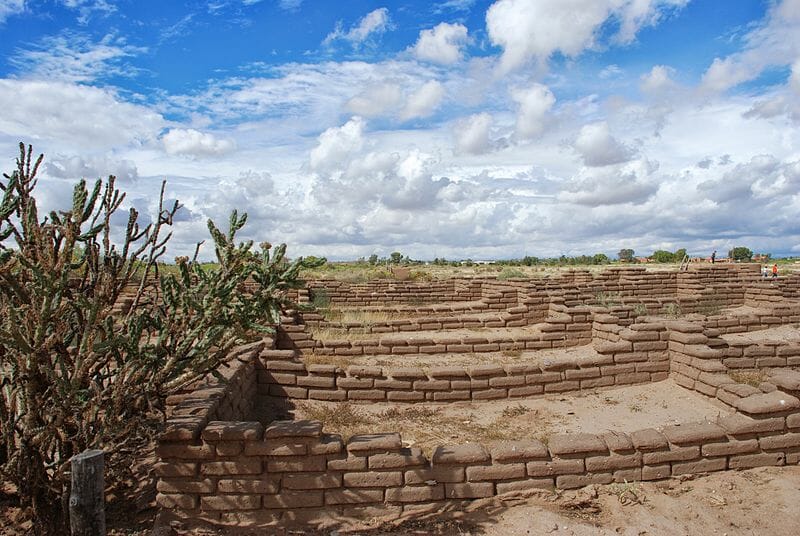Coronado Historic Site

These are reconstructed ruins to resemble the original Kuaua Ruins at the Coronado State Monument. Also featured in the picture are the cactus plant known as tree cholla (Cylindropuntia imbricata). Author Skarz
Welcome to Coronado Historic Site, an archaeological hotspot that is part of the state-governed Museum of New Mexico system. Your group will find this spot just 1 mile west of Bernalillo County, 16 miles north of Albuquerque. The 6 acres found here were set aside for public viewing in 1939 after several years of unearthing and reconstructing. Today you will find a Visitor Center and hiking/viewing trails around the actual ruins themselves.
So what exactly is on this site? How about we start with a history lesson. In 1540 Francisco Vasquez de Coronado brought 500 Mesoamerican soldiers and 2,000 Indian allies to the area in search of the fabled Seven Cities of Gold. What he found instead were 12 villages inhabited by native farmers, the groups all speaking Tiwa. These peoples were quickly dubbed the Los Indios de Los Pueblos, and Vasquez and his men used their resources to survive in the area. Kuaua was the northernmost village, the term meaning “evergreen” in Tiwa. It is believed that this community thrived around 1325 AD with about 1,200 people. The remaining descendants of this village that still practice traditional lifestyles live in nearby villages, such as Taos.
In the 1930s excavation of the area a square kiva, or ceremonial chamber, was unearthed and several mural paintings were discovered. These paintings serve as ‘some of the finest examples of pre-Columbian art ever found in the U.S’, the 14 examples found within the Visitor Center on site. The Kiva was recreated, the architecture of this and the Visitor Center done by celebrated architect John Gaw Meem. Inside the center you will also find several prehistoric and historic Puebloan and Spanish colonial artifacts, as well as several hands-on exhibits. Outside you can enjoy the majestic views of the Rio Grande and the Sandia Mountains from the picnic tables or trails, the vistas vastly unchanged since the times of the Tiwas. Take the El Camino Real National Historic Trail or the Jemez Mountain Trail National Scenic Byway for the best views, you can even opt in for a ranger-led tour during your visit.






